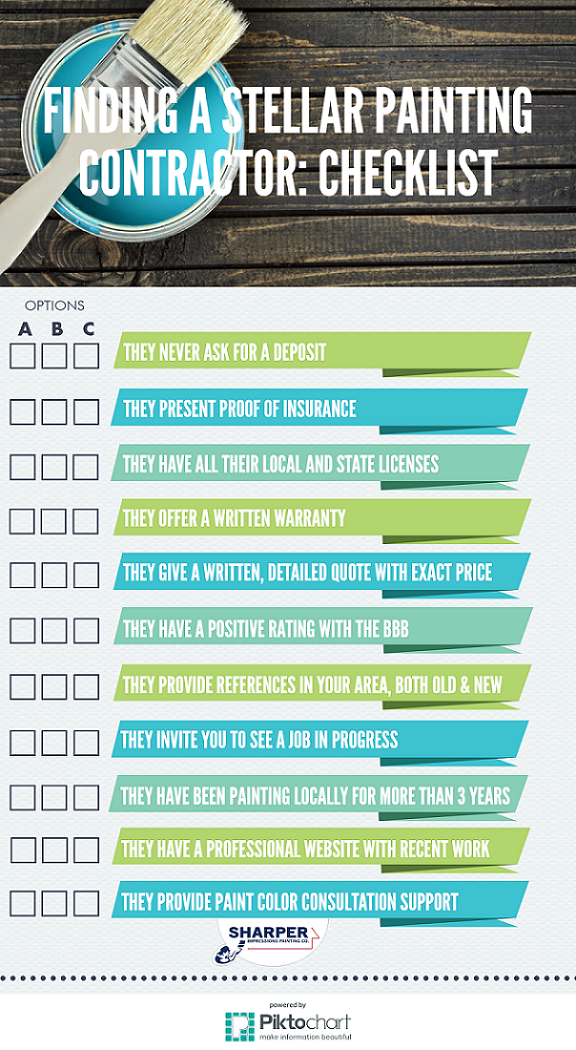How Paint Selections Can Influence Your State Of Mind: Recognizing The Psychology Of Color
How Paint Selections Can Influence Your State Of Mind: Recognizing The Psychology Of Color
Blog Article
Staff Writer-Haugaard Poulsen
When it involves selecting paint colors for an area, the selections made extend beyond mere aesthetic appeals. The psychology of color looks into exactly how various colors can influence our emotions and psychological health, shaping the setting of a space in extensive means. Comprehending the effect of shade on state of mind can result in intentional and calculated design choices that deal with enhancing various elements of our lives. By discovering the elaborate connection between color and psychology, one can reveal the subtle yet powerful methods which repaint selections impact our emotional experiences within a given atmosphere.
The Influence of Shade on Feelings
Regularly, the shades we border ourselves with can considerably influence our emotional state and total health. The influence of shade on feelings is a well-researched area within psychology and interior decoration.
Cozy shades like red, orange, and yellow are understood to stimulate feelings of power, warmth, and convenience. These shades can stimulate conversation and produce a comfortable atmosphere in a room.
On the other hand, cool shades such as blue, eco-friendly, and purple often tend to have a relaxing result, promoting relaxation and harmony. These shades are often favored in rooms and offices to create a feeling of tranquility.
Moreover, read full article and saturation of shades play a critical function in determining their psychological effect. Bright, vivid shades can generate sensations of enjoyment and interest, while soft tones are more relaxing and mild.
It is very important to take into consideration the desired emotional action when selecting paint colors for different rooms in your home or work space. By recognizing What If I Paint My Whole House Cool Gray of shade, you can produce environments that sustain your emotional wellness and enhance your total mood.
Selecting the Right Paint Colors
Recognizing the psychology of color and its effect on feelings can lead individuals in choosing the best paint shades for their space. When selecting paint shades, it's important to think about the mood you want to produce in each space.
For instance, relaxing colors like blue and eco-friendly are optimal for rooms and relaxation locations, as they promote a sense of tranquility. On the other hand, vibrant tones like yellow or red can invigorate and promote discussion in social areas such as living areas or dining areas.
In addition to the emotional impact, the dimension and lighting of a room should additionally affect color options. Lighter tones can make a little space really feel more spacious, while darker tones can add warmth and comfort to bigger locations. Natural light boosts the means shades appear, so it's critical to test paint samples in different lights problems prior to making a decision.
Ultimately, choosing the right paint colors includes a thoughtful consideration of both psychological actions and practical aspects to develop a harmonious and comfy living environment.
Producing the Preferred Environment
Attaining the desired atmosphere in an area entails a critical mix of color selections and illumination considerations. Color plays a vital role in establishing the mood of an area. Warm tones like reds, oranges, and yellows can create a comfortable and welcoming atmosphere, excellent for rooms where convenience is vital, such as living rooms or bed rooms.
On the other hand, great colors like blues and greens evoke a feeling of tranquility and leisure, making them ideal for locations where tranquility is desired, like shower rooms or meditation rooms.
Along with color, lights is one more crucial factor in shaping the atmosphere of a room. Soft, warm illumination can enhance the heat of a space, while brilliant, cool lights can stimulate and boost the mood. Dimmer switches or flexible illumination components provide adaptability, permitting you to adjust the lighting to match different tasks or state of minds throughout the day.
Conclusion
To conclude, the psychology of color shows the significant impact paint selections can have on our state of mind and feelings within an area.
By comprehending exactly how different colors stimulate details sensations and selecting paint colors appropriately, we can produce settings that promote power, convenience, relaxation, or exhilaration.
Thoroughly selecting the best colors can assist us to affect our emotional state and total well-being in a provided room.
